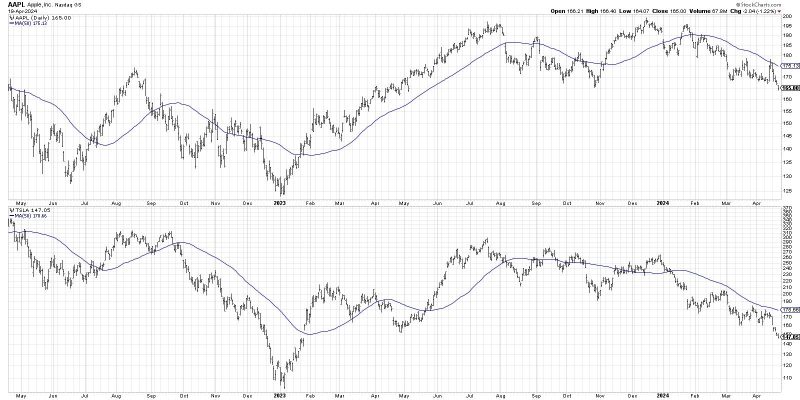In the fast-paced world of finance, especially within the realm of mega-cap growth stocks, market dynamics can shift swiftly, leading to significant ramifications for investors. The recent breakdown in mega-cap growth sectors has sparked concerns and confirmed a bearish phase in the market. This article explores the key factors driving this shift, the potential implications for investors, and strategies to navigate this challenging market environment.
Mega-cap growth stocks have been stalwarts in driving market performance in recent years, attracting investors with the promise of stability, growth, and innovation. However, the tides have turned, with many of these once high-flying stocks experiencing a significant decline in value. Several factors have contributed to this breakdown, including rising inflation, tightening monetary policy, and concerns about overvaluation.
One of the primary drivers of the recent market turmoil has been the specter of inflation. As prices rise across the board, investors have become increasingly concerned about the impact on corporate earnings and consumer purchasing power. This has led to a reevaluation of the lofty valuations that mega-cap growth stocks have enjoyed, triggering a sell-off in these once high-flying names.
Furthermore, the Federal Reserve’s hawkish stance on interest rates has added to the pressure on mega-cap growth stocks. As the Fed looks to combat inflation by raising rates, investors are grappling with the prospect of higher borrowing costs and its implications for future growth. The shift in monetary policy has exacerbated the sell-off in mega-cap growth sectors, as investors seek refuge in safer assets.
The breakdown in mega-cap growth stocks has confirmed a bearish phase in the market, with many investors reevaluating their portfolios and risk tolerance. In such challenging market conditions, it is essential for investors to adopt a proactive approach to protect their investments and capitalize on potential opportunities. Diversification, risk management, and strategic asset allocation are crucial tools to navigate the uncertainties in the market.
For investors looking to weather the storm, a balanced portfolio that includes exposure to defensive sectors, value stocks, and alternative assets may provide insulation against the volatility in mega-cap growth sectors. Additionally, active monitoring of market trends, disciplined rebalancing, and staying informed about macroeconomic developments can help investors make informed decisions in a rapidly changing market environment.
In conclusion, the breakdown in mega-cap growth sectors has underscored the fragility of market dynamics and the need for investors to adapt to evolving conditions. While the current bearish phase presents challenges, it also offers opportunities for discerning investors to reposition their portfolios for long-term success. By staying vigilant, embracing diversification, and maintaining a disciplined investment approach, investors can navigate the uncertainties in the market and emerge stronger on the other side.

